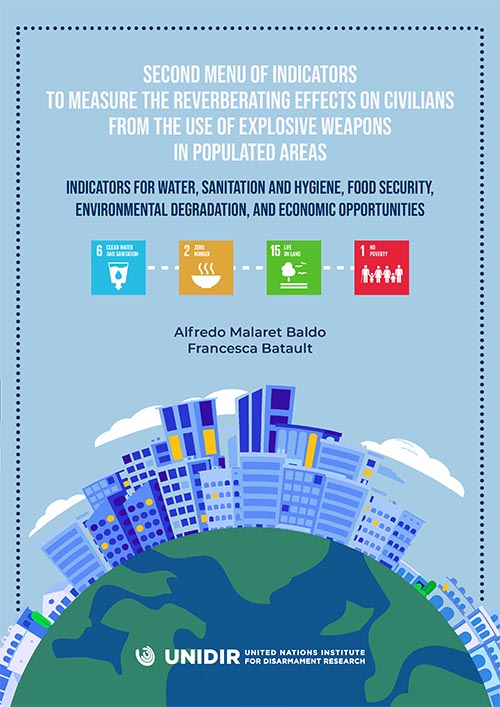Building on UNIDIR's First Menu of Indicators, this publication expands its focus areas to include impacts on water, sanitation and hygiene (WASH); food security; environmental degradation; and economic opportunity, with specific quantitative indicators presented for each of these four areas.
These indicators can be used to capture, measure, compare and understand how the use of EWIPA impacts the survival, well-being and dignity of civilians in ways that are often overlooked or underestimated.
These indicators are designed to help researchers document the broad range and scale of impacts and to enable identification of general and foreseeable patterns of harm resulting from the use of EWIPA, thereby contributing to the growing evidence base.
It is expected that such data will help inform and renew the understanding of parties to conflict and all stakeholders (including humanitarian assistance providers) of the reasonably foreseeable reverberating effects, enabling them to develop, design or update appropriate doctrine, practice, strategy, tactics and programmatic responses in order to better protect civilians in conflict situations.
For a recording of the launch of this publication featuring the authors and an expert panel, please visit the UNIDIR YouTube Channel.
Teaser: Indicators for Water, Sanitation and Hygiene, Food Security, Environmental Degradation, and Economic Opportunities
Sponsor Organizations: Federal Republic of Germany
Citation: Alfredo Malaret Baldo and Francesca Batault (2022) "Second Menu of Indicators to Measure the Reverberating Effects on Civilians from the Use of Explosive Weapons in Populated Areas", UNIDIR, Geneva, Switzerland. https://doi.org/10.37559/CAAP/22/PACAV/02
